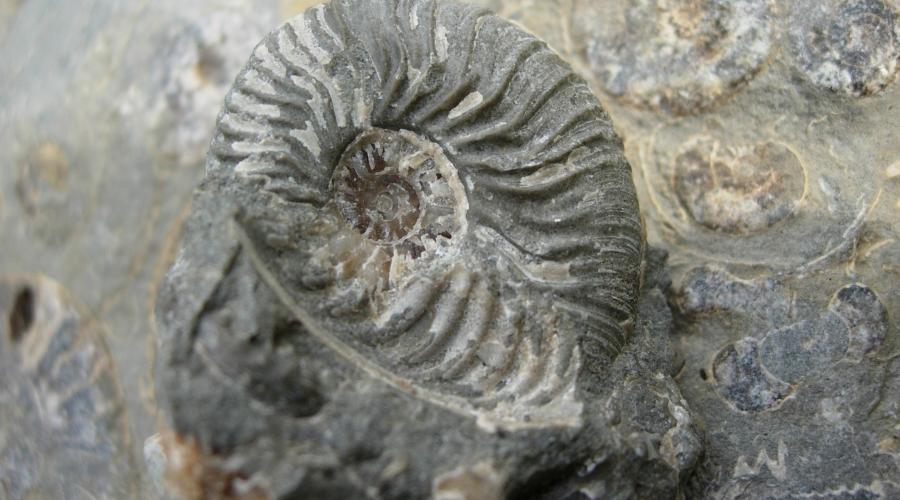
Helping to safeguard Skye's fossil heritage FAQ's
With special reference to the Skye Nature Conservation Order 2019
Skye has a rich fossil heritage with particularly important fossils of Jurassic age. In addition to being Sites of Special Scientific Interest (SSSI) some areas of Skye’s coastline have added protection under a Nature Conservation Order (NCO). This Order seeks to protect vertebrate fossils that include the remains of dinosaurs. This guidance outlines how fossil collectors, visitors to the island and the general public have an important role in helping to look after these important fossils.
What are fossils?
Fossils are the remains or traces of any organism (plant or animal) preserved in the rocks of the Earth’s crust and palaeontology is the study of fossils.
Through the careful collection and study of fossils we can learn much about past life, ancient ecosystems and the evolutionary process that gave rise to the diversity of plants and animals that inhabit the Earth today.
What fossils are found on Skye?
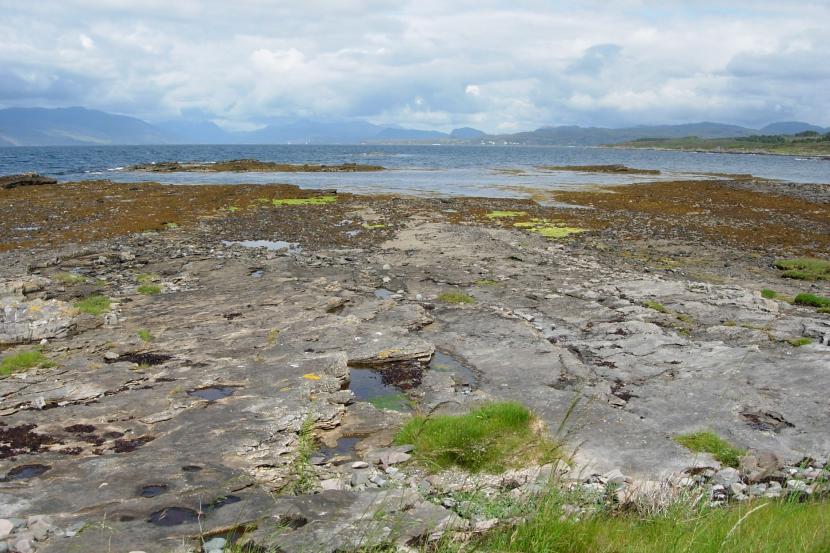
A stretch of rocky beach near Broadford, Skye. The fossil remains of Jurassic sea creatures occur in this area which is a Site of Special Scientific Interest (SSSI).
Fossils of creatures that inhabited a shallow marine sea, that covered the area that was to become the northern part of Scotland around 500 million years ago, are Skye’s oldest fossils. These fossils are similar to those that lived in the area that is now eastern North America and therefore provide some evidence that Scotland and North America were once part of the same landmass. This was long before the existence of the North Atlantic.
Skye is however better known for the fossils found in 200-145 million year old rocks that were once sediments such as sand, silt and mud deposited during the Jurassic period. Most of these are fossils of sea creatures, such as ammonites, belemnites and ichthyosaurs (a marine reptile) that lived in shallow tropical seas. Skye is also one of the few places in the world where 165 million year old Middle Jurassic rocks occur representing sediments laid down in expansive estuaries. It is in these Middle Jurassic sedimentary rocks that the footprints and actual skeletal remains of dinosaurs, which lived in and close by that ancient watery environment, can be found. Other Middle Jurassic vertebrate fossils include the remains of fishes, salamanders, lizards, turtles, crocodiles, and mammals. The fossil remains of insects and plants are another important aspect of Skye’s fossil heritage that help us understand the Jurassic environment in which dinosaurs and other animals lived.
Where are fossils found on Skye?
Hundreds of metres of sedimentary rock were formed during the Jurassic period in the area that we now know as Skye. Since then a major volcano punched its way through these rocks and millions of years of constant erosion has taken place. More recently glacial ice, during several glaciations, has been a major factor fashioning the landscape of Skye. At the present day the sea continues to erode the coast and the Jurassic sedimentary rock layers are being laid bare revealing fossils. There are various points along the coastline of Skye where fossils are found preserved in the rock or that have been eroded from the cliffs and occur loose on the beaches.
Why are fossils important?
Palaeontologists who study fossils are able to find evidence that can help answer questions of how life evolved on Earth. Middle Jurassic sedimentary rocks that contain dinosaur and mammal fossils are rare. Therefore the dinosaur and other Middle Jurassic vertebrate fossils of Skye are globally important and are paving the way for exciting advances in understanding vertebrate evolution.
Fossils are also used to understand ancient environments and ecosystems and how these have changed through time. Certain types of fossil can serve as indicators for resources such as oil and gas and have enormous importance in places such as the North Sea.
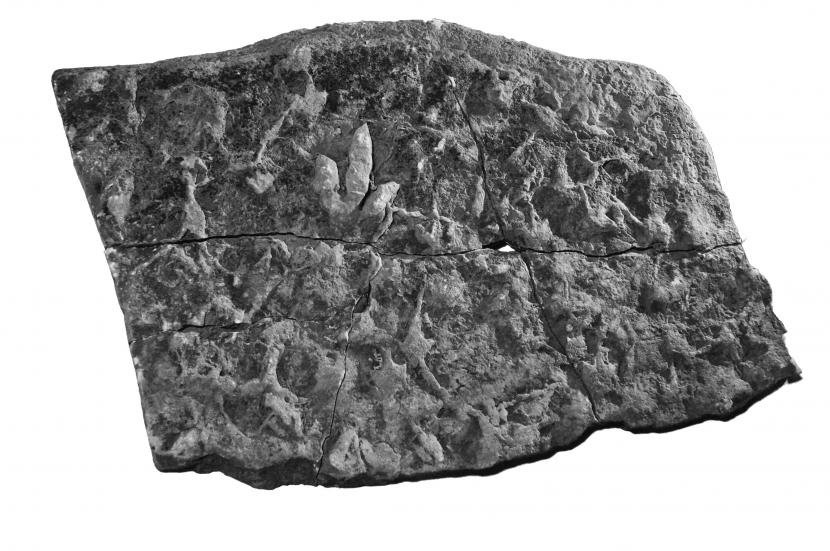
These dinosaur footprints from Northeast Skye show possible evidence of parenting. This specimen is located at Staffin Museum.
May I collect fossils on Skye?
Yes, you may collect fossils on Skye but be aware that there are certain restrictions which apply in some locations such as Sites of Special Scientific Interest (SSSI) and areas affected by the Nature Conservation Order (NCO). These restrictions are necessary to protect features of geological interest, of scientific importance, including fossil specimens. It is therefore a good idea to find out which areas of the coast restrictions apply by visiting SiteLink. The map below provides an overview of the areas affected by the NCO.
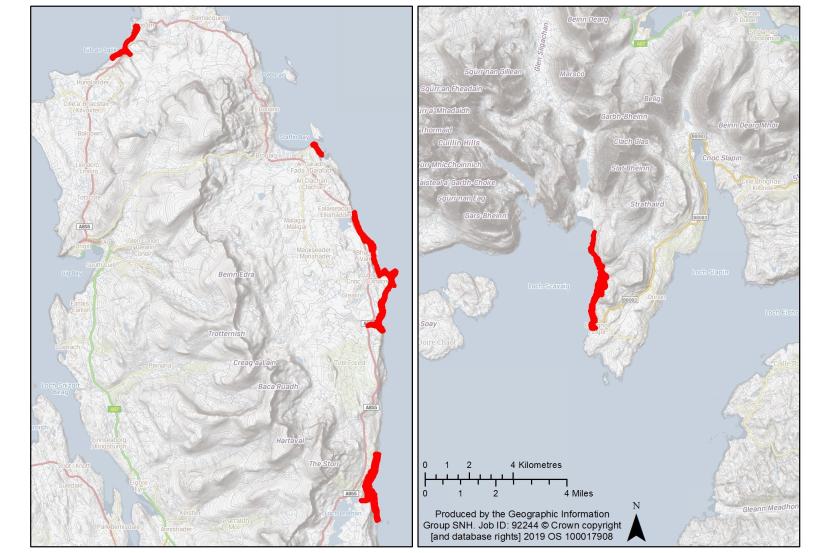
In general if collecting fossils on Skye please do so responsibly and follow the advice on best practice in the collection and storage of fossil specimens outlined in the Scottish Fossil Code. The Code may be viewed and downloaded from the Scottish Fossil Code webpage. The ‘Essentials of the Code’ are as follows:
- Seek permission - In practice, common fossils and small geological specimens have traditionally been collected without permission and usually without hindrance. However, you are acting within the law if you obtain permission to extract, collect and retain fossils.
- Access responsibly - Consult the Scottish Outdoor Access Code prior to accessing land. Be aware that there are restrictions on access and collecting at some locations protected by statute.
- Collect responsibly - Exercise restraint in the amount collected and the equipment used. Be careful not to damage fossils and the fossil resource. Record details of both the location and the rocks from which fossils are collected.
- Seek advice - If you find an exceptional or unusual fossil do not try to extract it; but seek advice from an expert. Also seek help to identify fossils or dispose of an old collection.
- Label and look after - Collected specimens should be labelled and taken good care of.
- Donate - If you are considering donating a fossil or collection choose an Accredited museum, or one local to the collection area.
In addition to following the best practice guidance set out in the Scottish Fossil Code, student groups and visiting researchers are expected to follow established best practice guidance for undertaking fieldwork.
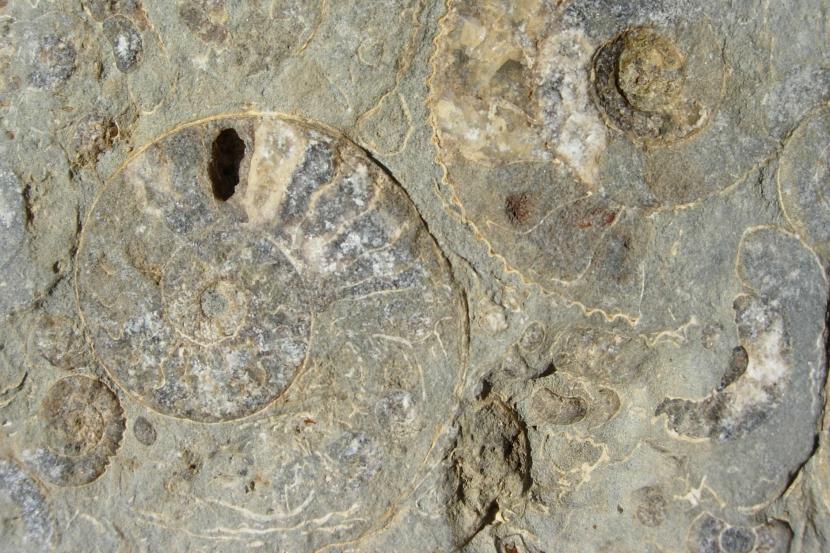
Invertebrate fossils such as this are not affected by the Skye Nature Conservation Order. However, in areas that are also Sites of Special Scientific Interest (SSSI) restrictions on collecting can also apply.
What is a Nature Conservation Order (NCO)?
Following instances of damage to and the removal of significant vertebrate fossils, such as dinosaur footprints and bones, a Nature Conservation Order has been signed by Scottish Government Ministers.
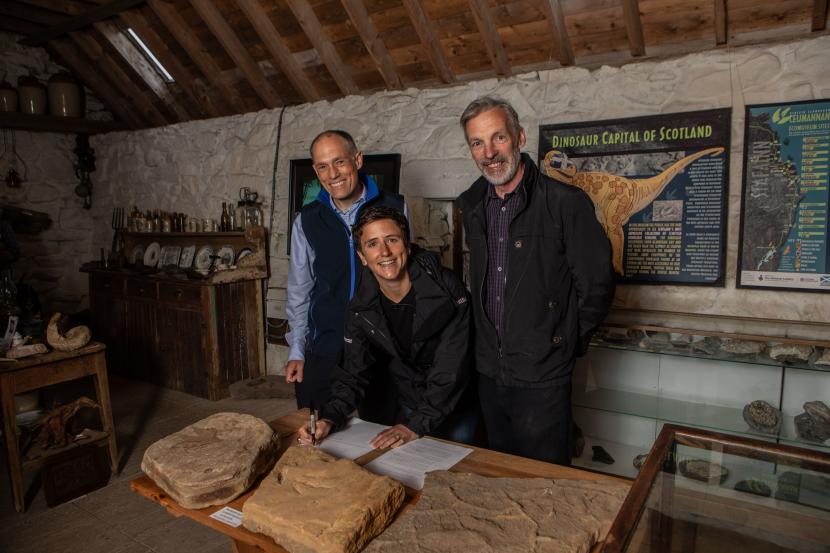
The Skye Nature Conservation Order being signed by Mairi Gougeon, Scottish Government Minister for Rural affairs and the Natural Environment, at Staffin Museum.
The Order enhances protection for some coastal locations on Skye where vertebrate fossils are found including some Sites of Special Scientific Interest (SSSI). It is illegal to damage or attempt to collect vertebrate fossils and remove them from areas covered by the Order. However, the Order exempts vertebrate fossil collecting by those from museums and other institutions that are qualified, experienced and have the required skill to do so. It is important that those considering they satisfy the exemption criteria, allowing them to collect vertebrate fossil material, should read the details of the exemption in the Order before commencing any collecting activity. The exemption ensures that important fossils are properly collected, researched and made available for public display.
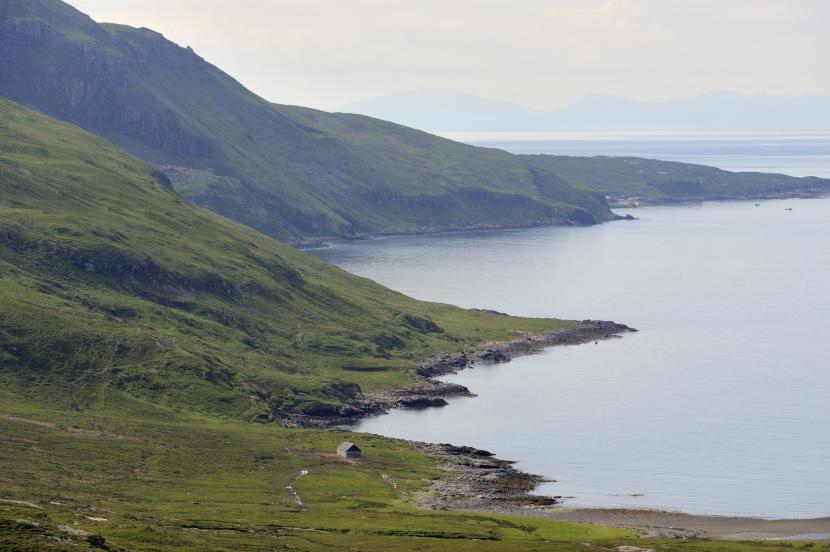
One of the areas of Middle Jurassic rock on Skye protected by the Skye Nature Conservation Order.
Is all collecting prohibited in the areas affected by the Nature Conservation Order?
No, you may still collect fossils provided that the Scottish Fossil Code is followed and the correct procedure is adhered to if within a SSSI. However, any collecting in the NCO affected areas must be restricted to invertebrate fossils. The extraction collection and removal of vertebrate fossils, even in the form of small or loose fragments, is prohibited unless exemption, as defined by the NCO, applies.
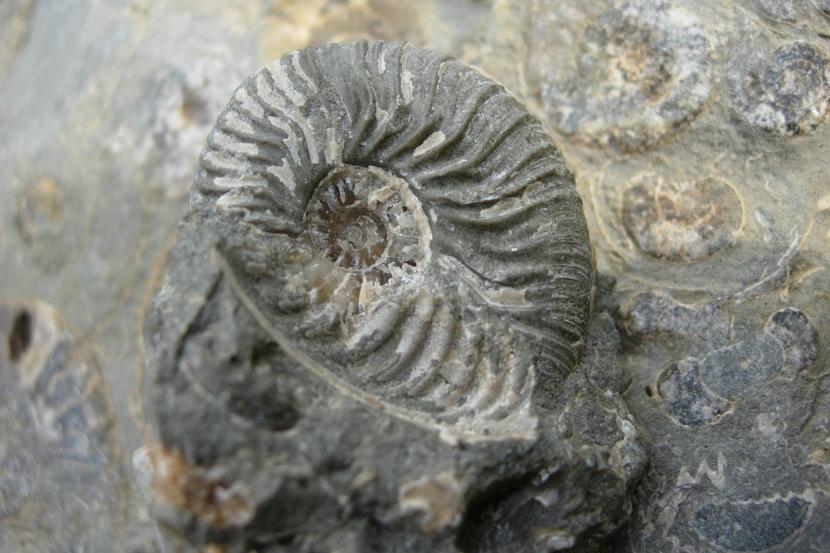
A fossil found on a beach in Northeast Skye. Invertebrate fossils such as this are not affected by the Skye Nature Conservation Order. However, in areas that are also Sites of Special Scientific Interest (SSSI) restrictions on collecting can also apply.
What do vertebrate fossils look like?
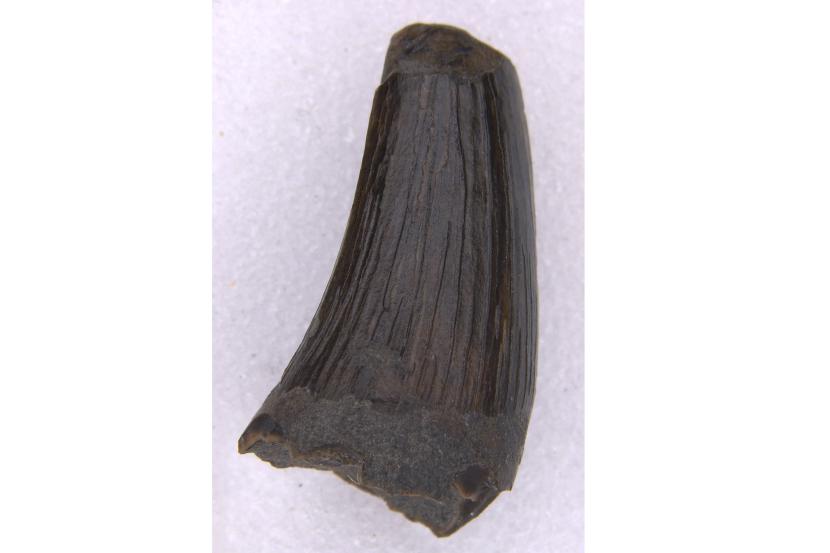
This rare plesiosaur tooth was recently discovered by a young fossil collector near Staffin, Skye. This fossil has been donated to the Staffin Museum, Isle of Skye.
Vertebrate body fossils can include bones and teeth. Sometimes the bones may be joined into a skeleton, but they are usually found individually. Every bone or tooth fossil will look different, but they are commonly recognized because they have a different colour than the rock they are found in (often brown or black), are shiny, and are symmetrically (rather than randomly) shaped. If well preserved, bone or tooth fossils might closely resemble modern bones and teeth we are familiar with. If the interior of the bone is exposed, it may appear sponge-like in appearance having a honeycombed texture.
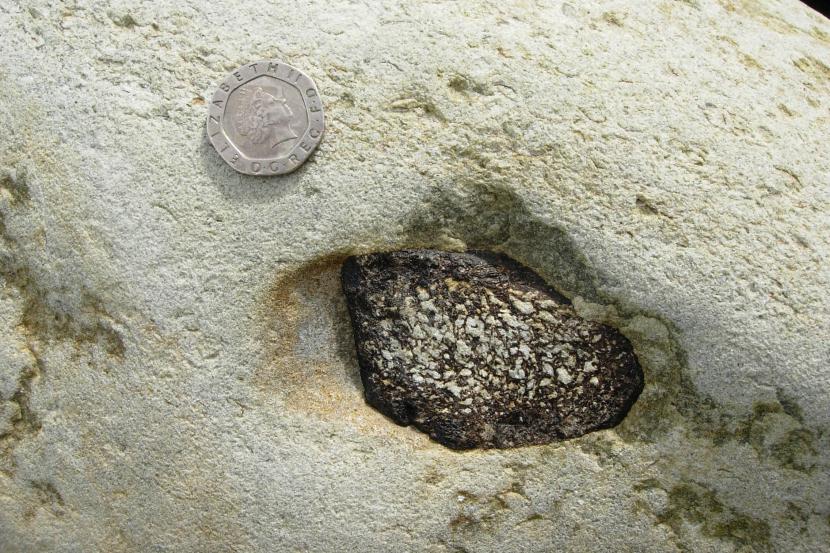
A loose boulder of rock showing a large piece of vertebrate bone (black) embedded within it. Found on a beach in Northeast Skye in an area affected by the Skye Nature Conservation Order.
Traces of animal activity such as footprints can occur as aligned depressions, sometimes showing toe prints, in the rock surface or as raised generally rounded masses depending on the rock type, the process of its formation and subsequent weathering. Dinosaur footprints are common fossils on Skye, so any depression on a rock platform might potentially be a footprint; often they are highly weathered, so toe impressions or symmetry may not be immediately apparent.
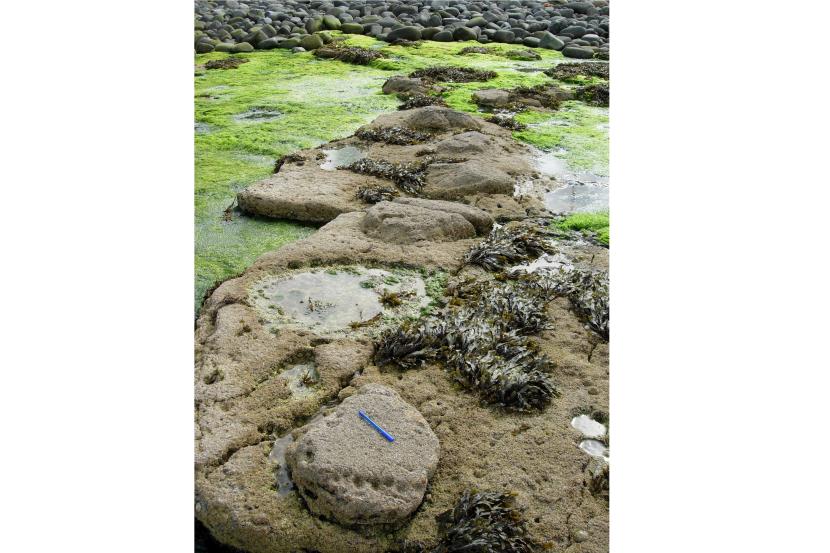
Dinosaur trackway at Duntulm, Skye protected by the Skye Nature Conservation Order. The raised areas, one of which is marked by a pen, and the circular hollow, are trace fossils representing the footprints of a dinosaur.
How can I help look after Skye’s Middle Jurassic vertebrate fossils?
Vertebrate fossils may only be collected by those who are qualified and experienced to do so and are affiliated to a relevant accredited institution such as a university or museum. So if collecting in any area affected by the NCO, and you find a fossil that you suspect is vertebrate in character, do not damage it by attempting to extract and remove it. Important information could be lost no matter how careful you might be and it constitutes an offence.
Instead your help is requested to record and report your find in order that professional palaeontologists and those skilled in fossil extraction and removal may be alerted. The specimen may then be expertly excavated and removed to safety for everyone’s benefit as regards its conservation, research and public exhibition. This guidance applies to vertebrate fossil finds in solid bedrock, within loose rock such as slabs, boulders and cobbles or even just lying among the other beach deposits.
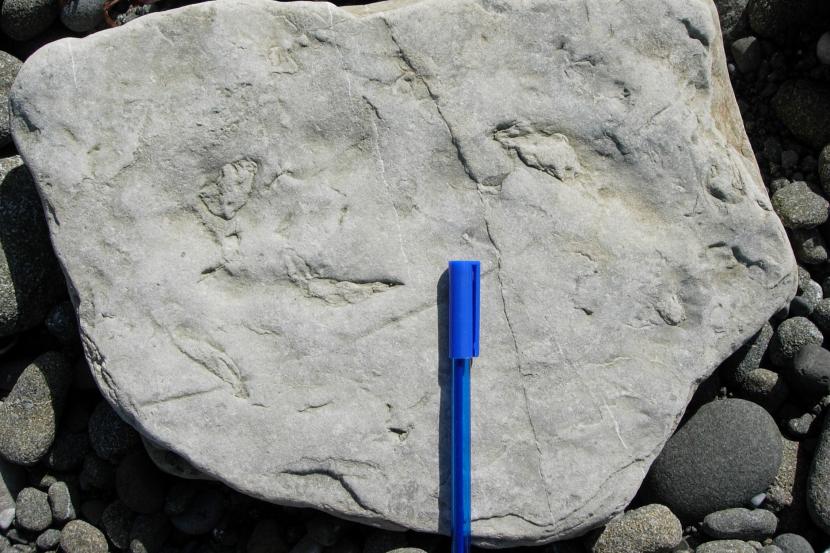
This loose rock was found on a beach in Northern Skye, in an area affected by the Nature Conservation Order. It shows the eroded remains of two dinosaur footprints where only a few of the toe impressions are discernible. This is an example of a vertebrate trace fossil that could be recorded and reported to allow its removal for the purposes of research and public exhibition.
How do I record and report vertebrate fossils?
Record: Photograph the fossil to show the entire specimen and also the fossil set against identifiable landscape features. This will help identification of the fossil and its location. Also record the grid reference and if that is not possible describe its location.
Report: You can help to protect this important fossil resource by simply reporting any vertebrate fossils you find and by providing information on the find that you have recorded. If it proves to be particularly significant arrangements may be made to perhaps retrieve the specimen.
It is suggested you contact at least two of the following:
Staffin Museum:
Email Dugald Ross at [email protected]
NatureScot:
Email [email protected] or telephone: 01463 725000
Natural Sciences department at National Museums Scotland (Edinburgh):
Email Dr Nick Fraser at [email protected] or telephone 0131 247 4228 / 0755 786 3723
The Hunterian (Glasgow):
Email Dr Neil Clark at [email protected]
School of Geosciences, University of Edinburgh:
Email Dr Stephen Brusatte at [email protected] or telephone 0131 650 6039
If the suspected vertebrate specimen is in danger:
If the suspected vertebrate find is either loose or in a small slab of rock lying within the intertidal zone and is in danger of being lost or damaged by wave action, it may be lifted to safety above the high water mark. This should only be done if it does not put yourself at risk of injury. Position, if you can, the find at a prominent point that will allow for its easy location and recovery by those qualified and experienced to do so. After the fossil’s relocation, record and report the find as outlined above.
Under no account should vertebrate fossils be removed from areas protected by the Order.
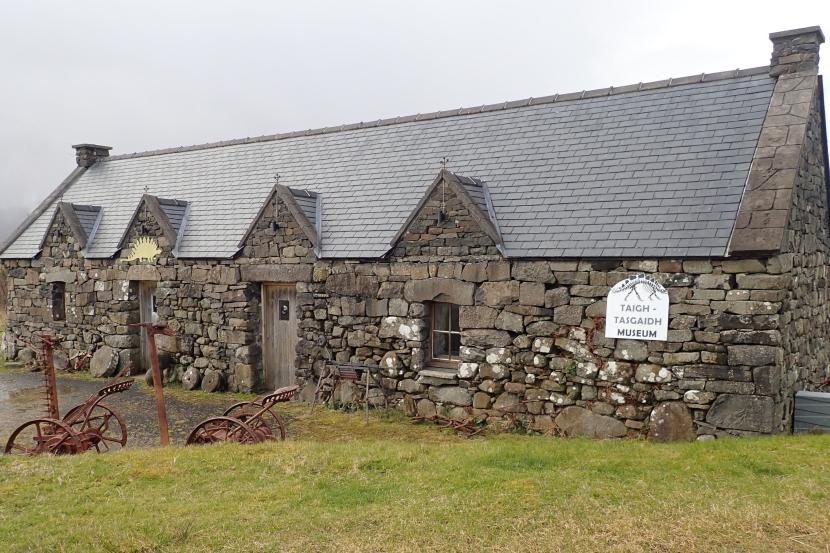
This museum has an important role in the recovery and public display of Skye’s Middle Jurassic vertebrate fossils.
What do I do if I suspect an offence is being committed?
You may come across a situation on Skye, in areas protected by the Skye Nature Conservation Order 2019, where you might suspect that an offence is taking place. Summarised the ‘prohibited operations’ are:
- Damaging, excavating and attempting to excavate vertebrate fossils, using either hand-held tools (such as sledge hammers, crow bars) or mechanical means (includes rock saws).
- Infilling vertebrate trace fossils with paint or plaster or other materials.
- Removal of vertebrate fossils (body and trace).
- Dumping or construction works which damage or cover trace fossils.
Full details of these operations are available at Nature Conservation (Scotland) Act 2004: Skye Nature Conservation Order 2019 - notice
The actions you could take if you suspect an offence is being committed are as follows:
- If safe to do so, enquire whether the person is allowed to undertake the activity;
- If you suspect an offence may have been committed note down the location, time, date, description of the incident and individual/s involved, any vehicle details and the name of other witness/es. If possible take photographs of the incident;
- Report the incident to Police Scotland on 101 as soon as possible for the attention of the Wildlife Crime Officer. Remember to ask for an incident number. Please note that calls to Police Scotland are treated in strict confidence and your details will not be revealed to any third party;
- It will be helpful to also report the incident and incident number to NatureScot by emailing [email protected], so we may check whether any permissions are in place and advise Police Scotland accordingly;
- Finally and most importantly your safety is priority – do not put yourself in danger!





